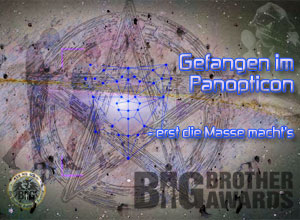

|
search / subscribe / upload / contact |
|
|
||
|
|
||
|
|
||
|
|
||
|
|
||
|
|
||
|
|
||
|
|
||
| RSS-Feed Depeschen | ||

|
||
Date: 1998-07-16
RSA/crack: Crypto/head Bruce Schneier analysiert-.-. --.- -.-. --.- -.-. --.- -.-. --.- -.-. --.- -.-. --.- Ansatz, RSA/Schlüssel zu knacken, die jahrelang gängige Lehr/meinung auf den Kopf gestellt habe. Numehr gelte: Hast du ein Stück von RSA geknackt, gehört dir der ganze Code. Conclusio:"Nice attack" Post/scrypt an die p.t. Print/journalist/inn/en auf der Liste: 1. RSA ist US Marktführer 2. Schon mal geguckt, welche Bank in .at oder .de welche Schlüssel nützt? -.-.- --.- -.-.- --.- -.-.- --.- Breaking RSA in PKCS1 July 15, 1998 Reports of RSA's death have been greatly exaggerated. There is a new attack on RSA implementations that can, in some circumstances, can be pretty devastating. Fortunately, the attack does not apply to RSA in general. Unfortunately, the "circumstances" aren't all that uncommon. The attack is simple to explain. I am the attacker, and I want to know the plaintext for a particular ciphertext encrypted with RSA. (Generally, this is a session key used for something else.) I send my victim a bunch of related messages (about one million of them) and watch his reaction. By learning which of those messages conform to particular data formats (PKCS1 in the paper), I can do some straightforward mathematical analysis and break the message I started with. Point 1: the attacker does not recover the secret key, only the plaintext to a particular message. That means that after I send the victim one million messages and watch the reactions to each, I only get to read one secret message. If I want to read another secret message, it takes another million related messages. Point 2: the attacker is relying on some information from the victim. In this case, he needs to know if the related messages he sends decrypt in a certain way. I like to call this general class of attack a "reaction attack," since it uses the victim's reaction as input. This is an old and powerful idea, but unfortunately in the age of computers it is easy to implement. Computer systems are good at automatically reacting to things, and then broadcasting those reactions to the world. Error messages, status messages, health information: it's all there if an attacker wants it. Point 3: the attacker has to send the victim a whole lot of related messages to break one message. The general attack requires one billion messages. This number can be reduced somewhat--the experiments against SSL required anywhere from 300,000 to 2 million related messages--but that's still a lot of messages. Still, computers are good at dealing with a lot of messages, and automated systems are likely to process those kind of message quantities without even noticing. Smart cards that the attacker can put in his own test setup are also vulnerable. ... There were several fixes announced. (Obvious fix: don't tell the attacker if the message was valid or not.) The quick ones increase the number of related messages required to break one message. These fixes make it much harder to mount this attack against on-line systems--the message volume will clog the system--and moderately harder against off-line systems like smart cards. Better fixes are to change the PKCS1 protocol, which specifies how the bits of plaintext are packed into a data structure that RSA can then encrypt. The RSA message packaging scheme in SET, for example, is not vulnerable to this attack. The attack has ramifications outside PKCS1. Many protocols will have to be corrected and many systems will have to be changed. Many people will have no idea that this attack exists and will design insecure implementations of RSA. Many years ago there was a string of theoretical cryptographic results that proved that every bit of RSA is as secure as the whole message. All of us cryptographers read the papers and decided that the results weren't terribly useful: if the entire RSA-encrypted message is secure, then each individual bit is secure. This piece of work turns that result on its head: if you can break single bit of an RSA message, then you can break the whole message. Nice attack. Relayed by schneier@counterpane.com http://www.counterpane.com related story http://www.wired.com/news/news/technology/story/13281.html -.-.- --.- -.-.- --.- -.-.- --.- TIP Download free PGP 5.5.3i (Win95/NT & Mac) http://keyserver.ad.or.at/pgp/download/ -.-.- --.- -.-.- --.- -.-.- --.- - -.-. --.- -.-. --.- -.-. --.- -.-. --.- -.-. --.- -.-. --.- edited by Harkank published on: 1998-07-16 comments to office@quintessenz.at subscribe Newsletter - -.-. --.- -.-. --.- -.-. --.- -.-. --.- -.-. --.- -.-. --.- |
|
|
|
| CURRENTLY RUNNING | |
q/Talk 1.Juli: The Danger of Software Users Don't Control

|
|
| !WATCH OUT! | |
bits4free 14.Juli 2011: OpenStreetMap Erfinder Steve Coast live in Wien

|
|

